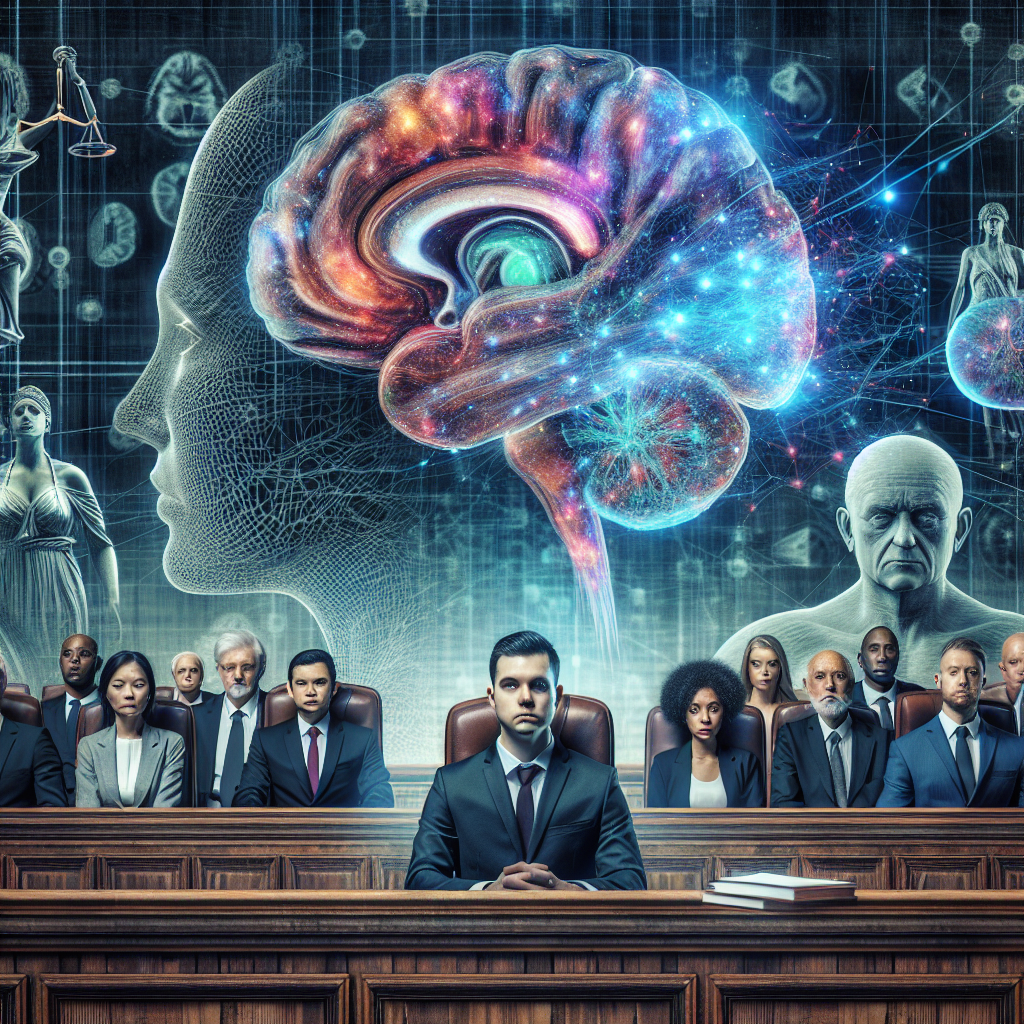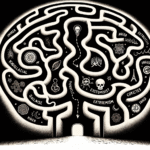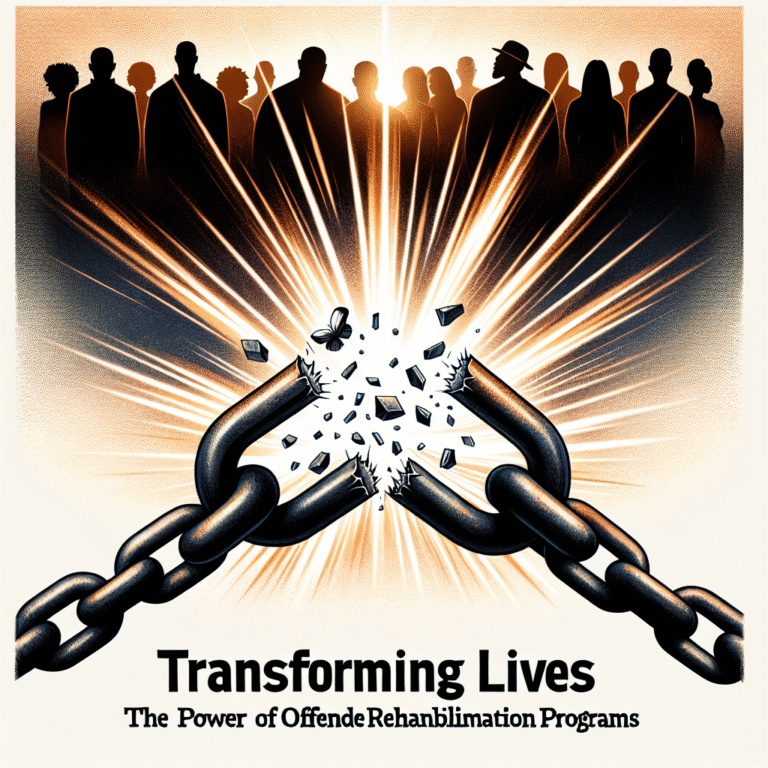
Introduction
Imagine walking into a courtroom, not armed with witness testimonies or physical evidence, but with a scan of your brain that reveals deeper truths about your mental state and intentions. This is more than a futuristic concept; it’s the compelling reality of forensic neuroimaging, an emerging field that is poised to revolutionize legal trials. As science and technology intertwine more profoundly with the legal system, understanding how our minds work has never been more essential. Beyond the Brain Scan: How Forensic Neuroimaging is Revolutionizing Legal Trials captures the transformative potential of this groundbreaking technology, blending neuroscience with the quest for justice.
The Rise of Forensic Neuroimaging
What is Forensic Neuroimaging?
Forensic neuroimaging refers to the use of advanced brain scanning technologies to analyze and visualize brain activity in a legal context. Techniques such as functional Magnetic Resonance Imaging (fMRI) and Positron Emission Tomography (PET) are employed to investigate cognitive functions associated with various legal issues, including criminal behavior, competency evaluations, and civil disputes.
Key Technologies
| Technology | Description | Applications |
|---|---|---|
| fMRI | Measures brain activity by detecting changes in blood flow | Analyzing intent, emotional responses |
| PET | Uses radioactive substances to observe metabolic processes in the brain | Assessing cognition in competency evaluations |
| EEG | Monitors electrical activity through scalp electrodes | Determining cognitive states, such as consciousness |
By employing technologies like fMRI and PET, forensic neuroimaging delves into cognitive processes that previously remained enigmatic. It allows not only for a deeper understanding of individual behaviors but also for nuanced interpretations of legal responsibilities.
The Legal Landscape
The Intersection of Neuroscience and Law
The incorporation of neuroimaging in courtrooms has sparked intense debates among legal scholars, neuroscientists, and ethicists. Traditional legal paradigms often rely heavily on behavioral observation and self-reported data. However, the advent of forensic neuroimaging challenges these conventions, compelling legal professionals to rethink critical aspects of criminal accountability, sanity, and even the application of the death penalty.
Case Study: The Role of Neuroimaging in Competency Hearings
In a notable case in 2010, neuroimaging evidence was introduced in the trial of a defendant charged with murder. The defense team utilized fMRI scans to demonstrate that their client suffered from severe mental illness, affecting not only his comprehension of the proceedings but also his capacity to make informed decisions. This use of brain imaging was pivotal in securing a verdict of not guilty by reason of insanity, opening the door to better understanding the intersection of mental health and criminal responsibility.
The Ethical Considerations
While forensic neuroimaging holds promise, it also raises ethical questions. Is it fair to use brain scans as definitive evidence of intent? What are the implications for privacy and consent? Moreover, how can we ensure that juries interpret neuroimaging data accurately, without succumbing to biases or misunderstanding?
Chart: Ethical Considerations in Neuroimaging
| Issue | Description |
|---|---|
| Privacy Concerns | Potential misuse of neuroimaging data beyond the courtroom |
| Interpretation Bias | Risk of misinterpretation by juries, leading to undue influence on verdicts |
| Consent and Coercion | Ensuring defendants voluntarily agree to undergo neuroimaging |
These ethical dilemmas underscore the need for robust guidelines and regulations surrounding the use of forensic neuroimaging in legal contexts. As we navigate this newfound territory, striking a balance between scientific insight and ethical integrity remains paramount.
Revolutionizing Legal Trials
Enhancing Evidence with Neuroimaging
Neuroimaging holds the potential to bolster case arguments, providing tangible evidence that aids in unraveling complex human behaviors. This is particularly significant in cases involving mental illness or where intent is ambiguous. The brain, having a profound impact on behavior, can sometimes reveal layers of a person’s psyche that words cannot express.
Case Study: Deception Detection
A pivotal area of application for neuroimaging is in the study of deception. A landmark study in 2008 explored whether fMRI could effectively discern truth from lies in criminal interrogations. The results indicated a promising correlation between certain brain activity patterns and deceptive behavior, suggesting that neuroimaging could be utilized to validate testimonies, though this remains contentious in the legal arena.
Transforming Sentencing Perspectives
Incorporating forensic neuroimaging can also influence sentencing outcomes. Understanding the psychological and neurological underpinnings of a defendant’s actions leads to more informed decisions by judges and juries alike.
Case Study: Sentencing Mitigation through Neuroimaging
Consider the 2015 case of a juvenile offender, where defense attorneys presented neuroimaging evidence demonstrating severe childhood trauma that influenced his decision-making process. The court chose a rehabilitative approach instead of a punitive sentence, illustrating how brain scans can foster compassion and informed decision-making in otherwise harsh legal contexts.
Training Legal Professionals
To fully harness the potential of forensic neuroimaging, there’s a pressing need for comprehensive training programs tailored for legal professionals. Understanding the nuances of neuroimaging—its capabilities, limitations, and ethical implications—is vital for attorneys, judges, and jurors alike.
Table: Educational Opportunities in Forensic Neuroimaging
| Institution/Program | Focus Area | Approach |
|---|---|---|
| American Academy of Forensic Sciences | Legal implications of neuroimaging | Workshops and public lectures |
| Harvard Law School | Intersection of neuroscience and law | Courses on neuroethics and law |
| Stanford University | Research on brain evidence | Collaborative projects with courts |
Establishing educational frameworks equips the legal community to adapt more effectively to the evolving landscape of forensic neuroimaging, allowing for the responsible application of this technology in trials.
Challenges and Limitations
The Limitations of Technology
While forensic neuroimaging offers immense potential, it is not without limitations. The accuracy of brain scans can be influenced by a variety of factors, including the methodology employed and the individual variances in brain structure.
Case Study: The Misinterpretation of Results
A pivotal study highlighted the challenges of relying solely on neuroimaging for legal arguments. In a 2012 trial, neuroimaging was presented as evidence of a defendant’s lack of impulse control, only for defense experts to later clarify that the interpretations drawn from the scans were speculative at best. This misapplication of neuroimaging serves as a cautionary tale for both legal practitioners and the court systems.
Overcoming Skepticism
Despite the promise of forensic neuroimaging, many skeptics in the legal field raise valid concerns regarding its reliability. Educating both legal professionals and the public about the capabilities and limitations of such technology is critical in overcoming skepticism and integrating these advancements into legal practice.
Chart: Public Perception of Neuroimaging in Legal Settings
| Concern | Percentage of Survey Respondents |
|---|---|
| Trust in accuracy | 55% |
| Ethical implications | 47% |
| Understanding of neuroimaging | 62% |
The Future of Forensic Neuroimaging
Embracing Interdisciplinary Collaboration
The future of forensic neuroimaging lies in fostering collaboration among neuroscientists, legal professionals, ethicists, and policy-makers. This multi-faceted approach ensures a holistic understanding of the technology and its implications, aligning scientific advancements with legal practices.
Legislative Developments
As forensic neuroimaging continues to evolve, legal frameworks must also adapt. There is a necessity for creating regulations that define the admissibility of neuroimaging evidence, guidelines for its use, and protocols to protect individual privacy rights.
Advocacy and Awareness
Raising awareness about the benefits and limitations of forensic neuroimaging is essential in shaping public opinion and influencing policy discussions. Advocacy groups should play a role in promoting responsible practices within both the legal and scientific communities.
Conclusion
Beyond the Brain Scan: How Forensic Neuroimaging is Revolutionizing Legal Trials marks an exciting new chapter in the intersection of neuroscience and law. While the technology raises important questions surrounding ethics, reliability, and interpretative accuracy, its potential to influence legal outcomes and understand human behavior is undeniable.
As legal professionals increasingly leverage neuroimaging, it is imperative to strike a balance between scientific advancements and ethical considerations. The goal is not just to harness the power of this technology, but to do so responsibly, ensuring that the pursuit of justice is informed by both understanding and compassion.
FAQs
1. What is forensic neuroimaging?
Forensic neuroimaging involves using brain scanning technology, such as fMRI , to gather insights about an individual’s mental state, which can aid in legal proceedings.
2. How does neuroimaging impact legal trials?
Neuroimaging can influence credibility, intent, and even competency evaluations. It can provide insights into a defendant’s mental health, potentially leading to alternative sentencing options.
3. Are there ethical concerns related to forensic neuroimaging?
Yes, concerns include privacy issues, the potential for misinterpretation of results, and biases influencing jury perceptions when neuroimaging evidence is presented.
4. Can neuroimaging reliably detect deception?
Research is ongoing, but studies have shown some promise in using neuroimaging techniques to detect truth versus deception, although this remains controversial.
5. What future developments can we expect in forensic neuroimaging?
Expect ongoing interdisciplinary collaboration, advancements in technology, clearer legal guidelines for admissibility, and increased advocacy for ethical considerations in its application.
By embracing the potential of forensic neuroimaging while addressing its challenges, we can look forward to a more informed, equitable legal system that acknowledges the complexities of the human mind.

















